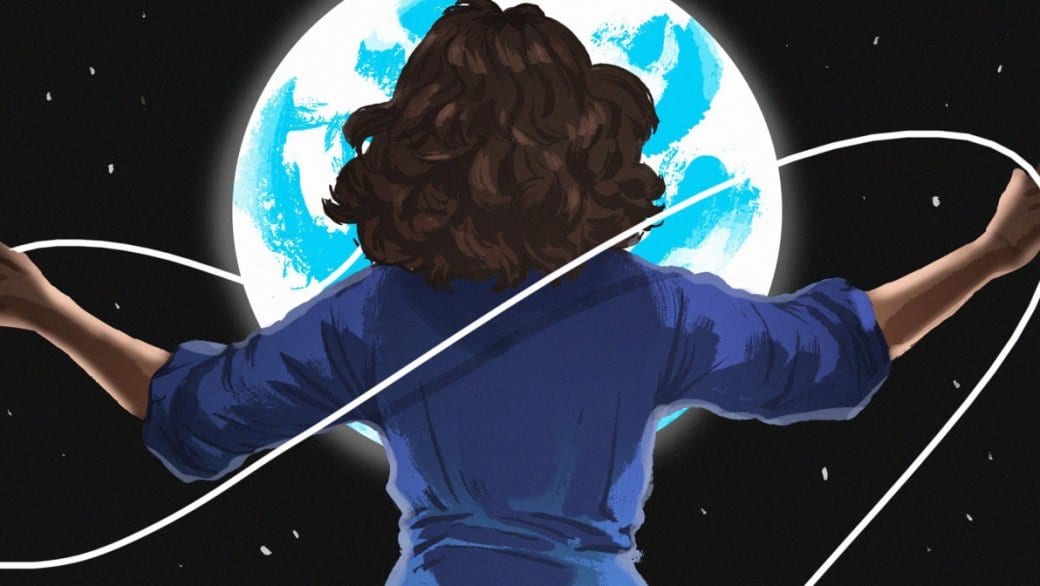When I want to read about queer women’s history, I often have to flip through some hefty LGBT history anthology just to get to that single chapter on women. It’s usually called “Sapphic-” something, or “Women who loved-” whatever. Meanwhile, there will be chapter after chapter of men fucking men through the ages. It can feel like that one chapter on women is very, “Well, I guess we better include something about them, too.”
While we can blame the male authors who often write these books, other times, there’s simply not enough material to work with. Women’s history is sparse and queer women’s history is sparser — making it essential that scholars keep digging up lost artifacts and stories and that the rest of us keep writing about the queer women we do know about.
Like Sally Ride. Her story is worth hearing again and again — and a History Boys article is long overdue.
Ride had several big “firsts.” The first “first” was in 1983 when she became the first American woman to go to space (the third woman globally, after two Russian cosmonauts). It was huge news — except that in the press conference that NASA held in the lead-up to the launch, reporters were more interested in her reproductive organs. Would the flight affect them? Did she plan on being a mother someday? Did she cry when things got tough? Soon after, People Magazine wrote an article admiring Ride’s ability to skillfully shut that sexist shit down.
“In an hour of interrogation that is by turns intelligent, inane and almost insulting, Ride remains calm, unrattled and as laconic as the lean, tough fighter jockeys who surround her,” it reads. The article includes one of the astronaut’s cooler responses: “It may be too bad that our society isn’t further along and that this is such a big deal.”
The second first that year: at 32 years old, she was — and still holds the record for being — the youngest American astronaut in space, the first trip being in the Challenger.
That first trip to space was aboard the space shuttle Challenger (where she, among other tasks, operated the Canadarm — yay Canada!). In 1984, she went up a second time in the Challenger, and she would have gone up a third time, but in 1986 the Challenger exploded after taking off, killing all seven crewmembers.
Instead of going to space again, Ride found herself on the committee that investigated the disaster. In 2003, she also investigated the space shuttle Columbia disaster. She was the only person to serve on both committees. (This one’s an “only,” not a “first,” but I’ll take it.)
She retired from NASA in 1987, but she didn’t stop achieving. In 1989, she became director of the California Space Institute, and a physics professor at University of California, San Diego. In 2001, she co-founded Sally Ride Science (which, since its 2015 relaunch as a non-profit, is now called Sally Ride Science at UC San Diego), an organization that promotes the study of science, especially among girls.
She was a very private person — as private as she could be, given her extremely high profile. She rarely gave product endorsements and refused to approve biographies and movies based on her life. Amusingly, she did agree to play herself in a 1999 episode of the TV show, Touched by an Angel.
Her desire for privacy leads well into the third first: she was the first known queer astronaut. But her orientation — and her long-term female partner — were not publicly acknowledged until her death in 2012, when Sally Ride Science released an obituary that referred to, “Tam O’Shaughnessy, her partner of 27 years.” That’s when the world found out, and were surprised again when it was also revealed that she’d been battling with pancreatic cancer for more than a year.
Lynn Sherr’s 2014 biography, Sally Ride: America’s First Woman in Space, says Ride and O’Shaughnessy kept quiet about their relationship not because Ride was a very private person, as Ride’s sister, Karen “Bear” Ride suggested to BuzzFeed in a 2012 article, and other publications, but for economic reasons. It includes quotes from an interview with O’Shaughnessy. “Corporate America is really nervous about gay women,” O’Shaughnessy said. “When we started Sally Ride Science, we were just worried that it would affect the growth of the company, the sponsorships.”
Today, the 64-year-old is the executive director of Sally Ride Science at UC San Diego.
While many articles have called Ride “gay” and “lesbian,” it’s unclear to me precisely how she identified. She was married to a man, Steve Hawley, also an astronaut, at the time of her first trip to space (they divorced in 1987), but her longest relationship was with O’Shaughnessy. In the same BuzzFeed article, Bear (who, according to the article, identifies as “gay”) said, “Sally didn’t use labels. Sally had a very fundamental sense of privacy. It was just her nature, because we’re Norwegians, through and through.”
For her many firsts, and her other accomplishments, Ride won lots of awards in her life, and continues to win them even after her death. In 2013, President Barack Obama awarded her the Presidential Medal of Freedom posthumously, the United States’ highest civilian honour. O’Shaughnessy accepted the award for her at a White House ceremony.
It’s stories like Ride’s that keep the celebration of queer women’s history alive, and spark our curiosity to know and search for even more of these accomplishments buried amid all the history of men fucking men through the ages. Because it exists — we just need to do our part.
History Boys appears on Daily Xtra on the first and third Tuesday of every month. You can also follow them on Facebook.


 Why you can trust Xtra
Why you can trust Xtra


